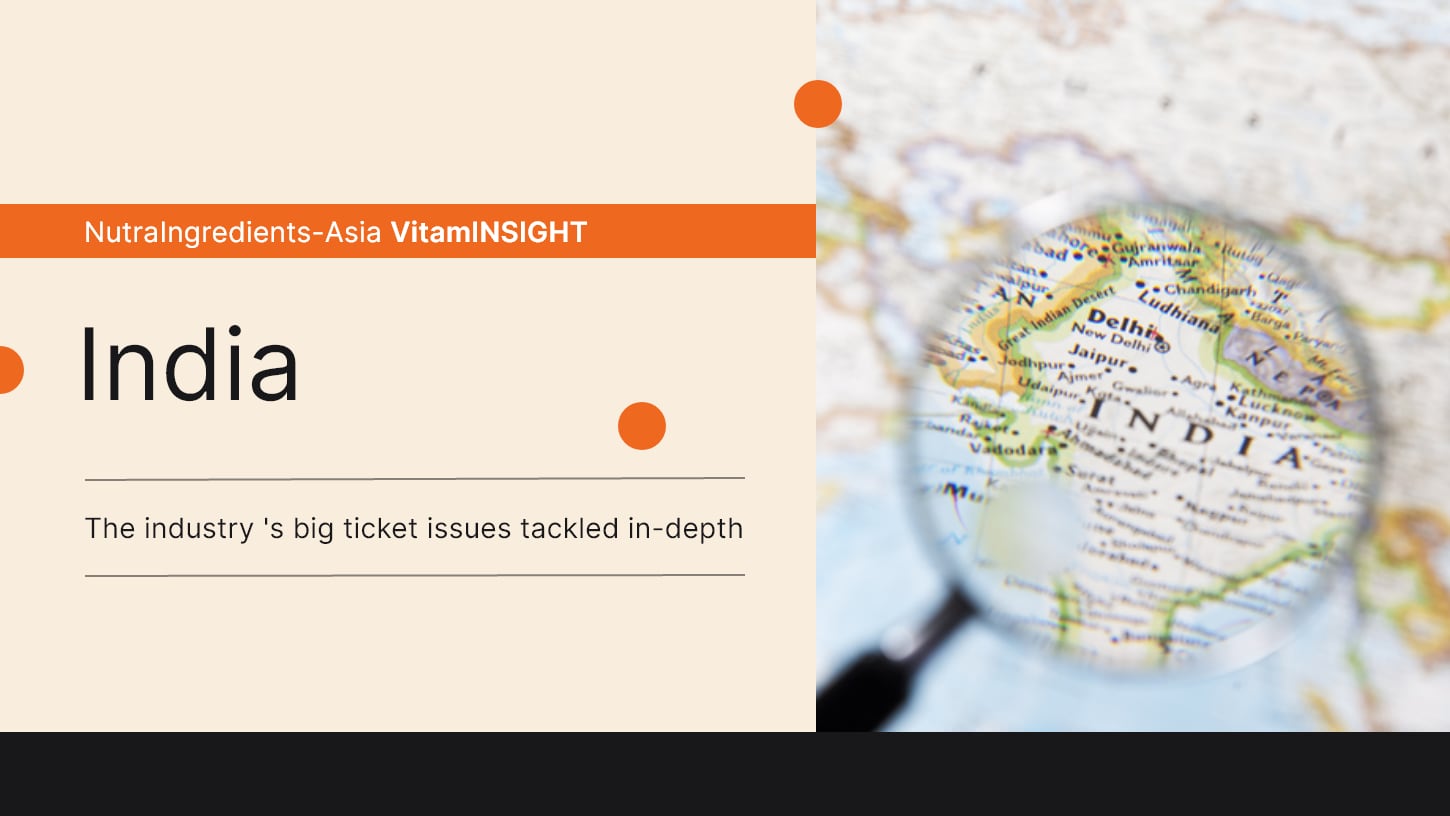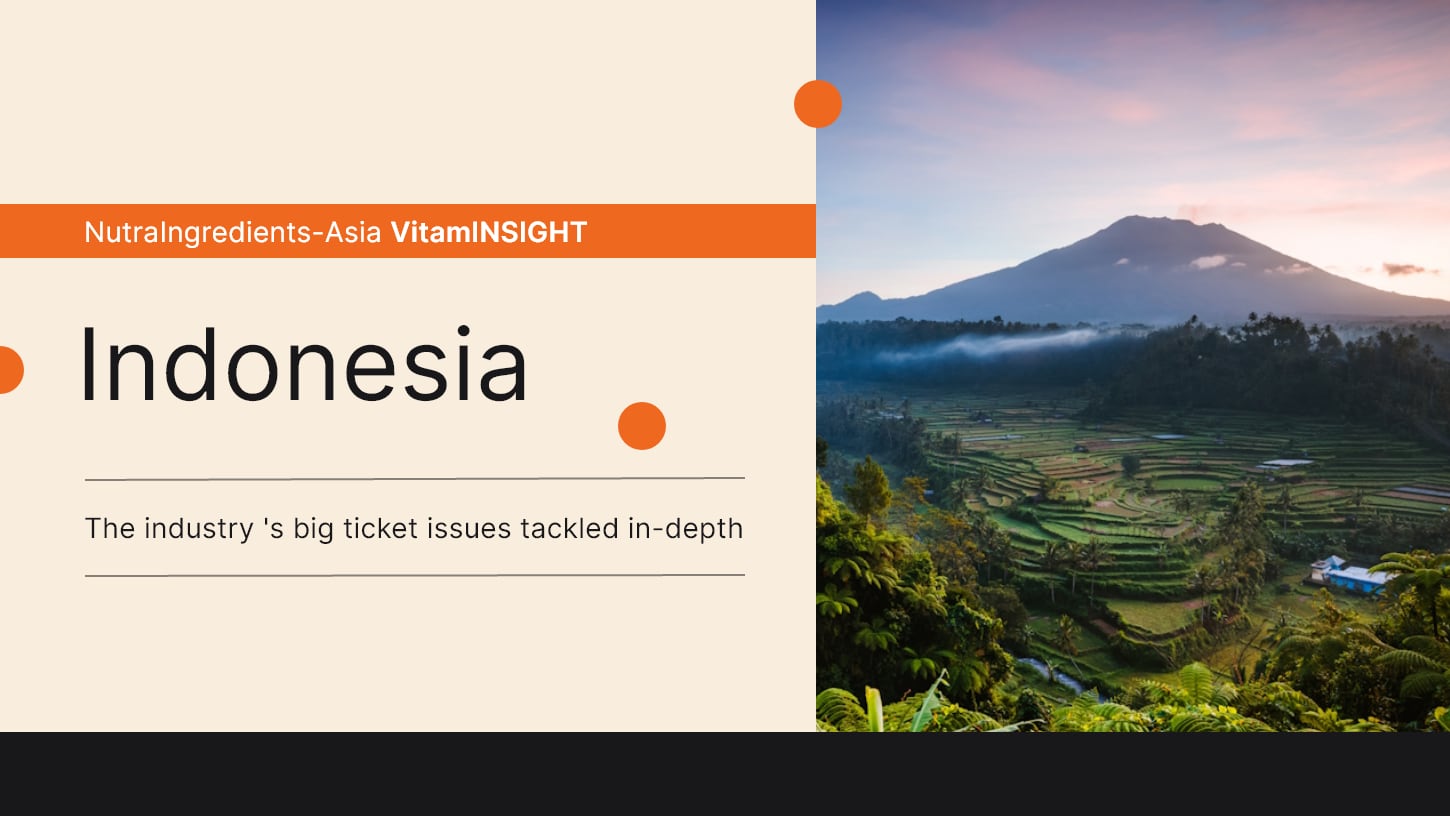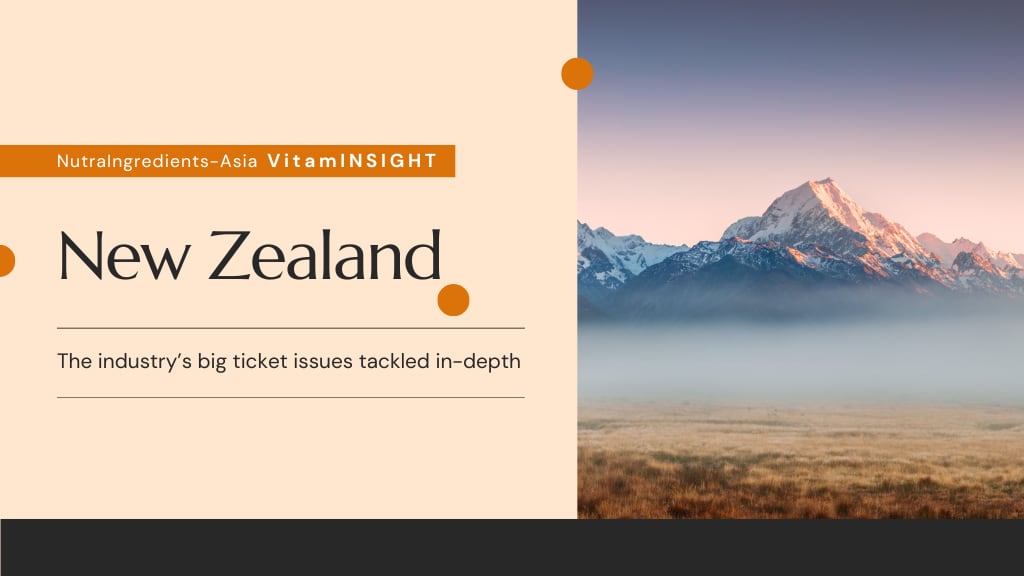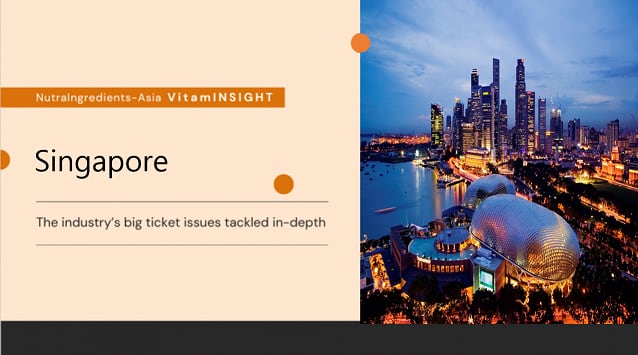Categories such as weight management, and beauty-from-within are trending heavily, but there is also scope to meet demand for less developed sectors, including blood glucose management and Foods for Special Medical Purposes (FSMP).
India’s nutraceutical market now stands at US$8 billion industry, and the target is to reach $100bn dollars by 2030, according to a report by The National Institution for Transforming India Aayog – the policy think-tank of the government of India.
Its growth has accelerated in the past five to 10 years and its opportunities are said to be far greater than that of the pharmaceutical sector, which India is already known for globally.
“In India, we had a small nutra industry 10 years ago, so it's a phenomenon that has come up just in the last five to 10 years,” Ajit Singh, chairman and founder of ACG Worldwide, also the president of Health Foods & Dietary Supplements Association (HADSA), told us previously.
Ashwin Bhadri, CEO of Equinox Lab that conducts regular testing of food and nutraceuticals for companies to meet their regulatory compliance, said that one in 10 products tested these days was either a nutraceutical or functional food.
Five to 10 years ago, only one in 100 products tested was either a nutraceutical or functional food, he said, with the data reflecting the greater number of nutraceuticals and functional foods sold in the Indian market these days.
There is also a greater participation from international firms these days. Today, about five per cent of the nutraceuticals tested in his lab are from overseas firms, but this was merely about one per cent five to 10 years ago.
“The number of tests on overseas products is slowly rising…Because the demographic is so dense, and people want to enjoy a piece of the pie, international companies are now looking at India as a potentially large market,” said Bhadri.
Examples of overseas nutraceutical firms expanding in India include Haleon, which said it would be introducing Centrum’s range of products to brick-and-mortar stores. The brand debuted in India via e-commerce about 1.5 years ago.
Although the market is fast-growing, it would be a mistake to think that it is overcrowded.
According to Nihaal Mariwala, CEO and founder of nutraceutical firm Setu Nutrition, the market might be saturated for commoditised categories such as fish oil, but this is not the case for differentiated products that address common consumer needs such as weight management, beauty-from-within, and sleep support products.
I don't think India’s nutraceutical market is overcrowded. There are surely a lot of players but there's obviously a lot of customers also to be had.
While it can look like the market is crowded, the reality is that the market is crowded in the commoditised space, it's not really crowded if you do something that’s differentiated.
Nihaal Mariwala, CEO and founder, Setu Nutrition
In this series of VitamINSIGHTS, we take a deep dive into the trending nutraceutical categories, changes in consumer behaviour, and how far the sector has come in terms of safety and quality.
Trending needs: The convergence of the young and old
India has a relatively young population and categories such as beauty-from-within and sports nutrition are key categories driving the market, but issues such as diabetes and cancer nutrition needs – that seem more related with ageing – are also on the rise and there is a demand for more products in these areas.
Data from World Bank shows that teenagers between 15 and 19 years old made up the largest population group in India in year 2020, with 4.8 per cent of males and 4.4 per cent of females in this age category.
Those between the age of 20 to 24 and 10 to 14 made up the second largest age group, with 4.7 per cent of males and 4.3 per cent of females similarly falling in these two age groups.
Seniors aged 60 and above made up a smaller proportion. For example, 1.8 per cent of males were between 60 and 64 years old, with the same percentage for females in this age group.
The larger proportion of the young population is driving demand for nutraceuticals targeted at skin concerns.
“Skin health is our biggest category, while weight / gut health is an emerging second large category,” said Mariwala.
“The reason I say this is because India is obviously a fairly young country. We have 450 million people who are less than 40 years old, and so the needs of that audience are very different from the needs of the older consumers…
“For the younger consumers, the highest impact areas from a supplement perspective, is largely sleep, weight, and beauty. And that's the way we see the market panning out. If you're going to pick the older audiences, typically their needs are more likely to surround heart, diabetes, liver health, so on and so forth,” he said.
Currently, Setu Nutrition’s top two bestsellers are Skin Youthful: Marine Collagen and Skin: Renew – Glutathione.
Within the beauty-from-within category, consumers are most familiar with the “big three” ingredients, namely collagen, glutathione, and biotin, with acne, pigmentation, and wrinkles the three most raised issues, he said.
As such, the company’s upcoming new product launch would include a probiotic-based beverage for acne prevention and skin clarity, as well as a weight management drink.
“We already have a probiotic and fibre-based beverage that we just launched for better gut health and better weight management.
“The major ones that are in our new product pipeline for the next six months would be one weight management drink, one skin clarity beverage, and then a couple of flavour variations on the existing collagen and glutathione products.”
Watch the following video to find out on the new products and the reasons for launching them in the beverage format.
Pradip Chakraborty, former director at the Food Safety and Standards Authority of India (FSSAI) and currently director to local firm Ishaanav Nutraceuticals, is similarly seeing market opportunities for weight management products.
This is especially because consumers are starting to realise that obesity is behind a host of disease, he said.
“Products for weight reduction and weight management has a big market, because people are health conscious and know that obesity causes a lot of diseases.”
This has also led to the rise of locally made protein foods for weight management which were mostly imported from the US in the past.
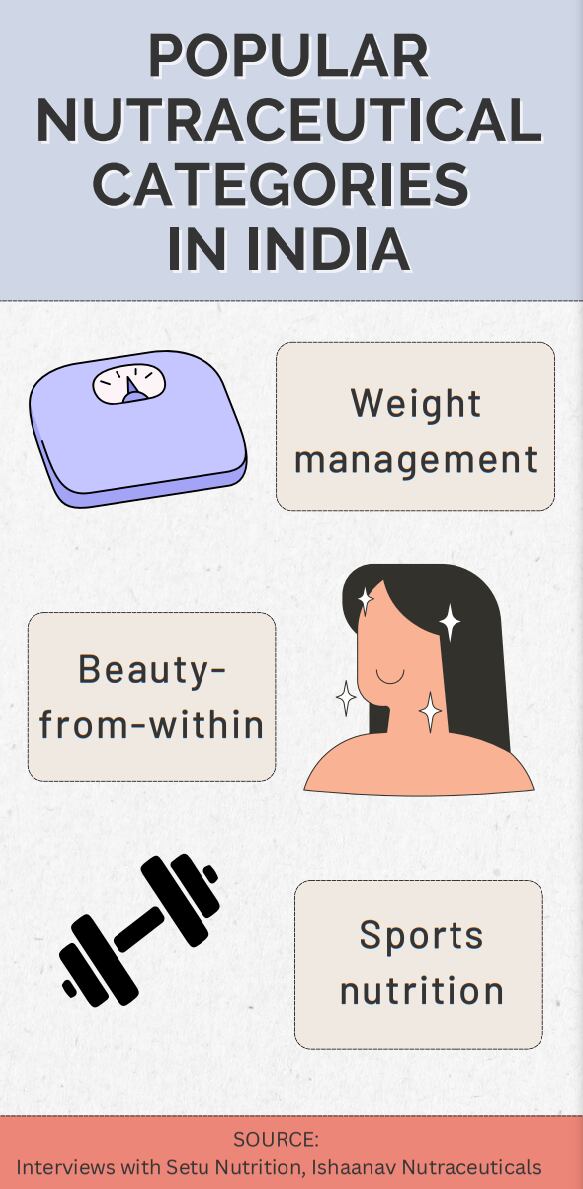
Some examples of popular protein foods include whey protein, which could also be consumed by the vast vegetarian population in India.
Protein is also a core ingredient for sports nutrition, which Chakraborty said was another trending category, driven by endorsement of cricketers and the availability of sports medicine specialists who recommend dietary supplements for sportspeople.
Within the sports nutrition category, demand for creatine has skyrocketed, said MuscleBlaze, which saw its creatine sales tripled in the past year.
On the other hand, Chakraborty believes that there is still a lack of supplements or awareness of such products for blood glucose management and FSMPs for cancer nutrition.
His company, Ishaanav Nutraceuticals, for example, has developed Hintosulin – a supplement that contains the extract of Hintonia latiflora designed for managing pre-diabetes.
The product is sold as a Foods for Special Dietary Uses (FSDU). However, he lamented the lack of initiative from medical doctors in taking preventive measures against pre-diabetes.
According to the National Family Health Survey (NFHS-5) 2019 – 21, the percentage of men and women aged 15 and above with high or very high blood sugar level was 13.5 per cent and 15.6 per cent respectively.
The percentage of men and women with hypertension was 21.3 per cent and 24 per cent respectively.
There was no data on the percentage of the population with hypertension and blood sugar level in the preceding NHFS-4 (2015-16) dataset.
The prevalence of overweight and obesity was studied in both datasets. In this case, the percentage of women who were overweight or obese, with body mass index (BMI) larger than 18.5kg/m2, have increased from 20.6 per cent to 24 per cent.
Similarly, men who were overweight or obese increased from 18.9 per cent to 22.9 per cent.
On FSMPs, Chakraborty believes that there is room for growth, especially tube feeding products for cancer patients.
A Lancet study published this year found that India, along with China and Japan, were the three countries highest in new cancer cases and deaths.
“In India, we have a number of super specialty hospitals and particularly, India is now the cancer capital of the world, because cancer has increased.
“Patients who cannot consume food directly take food through enteral tubes…We are still depending on imports for these products, but it has a good market.”
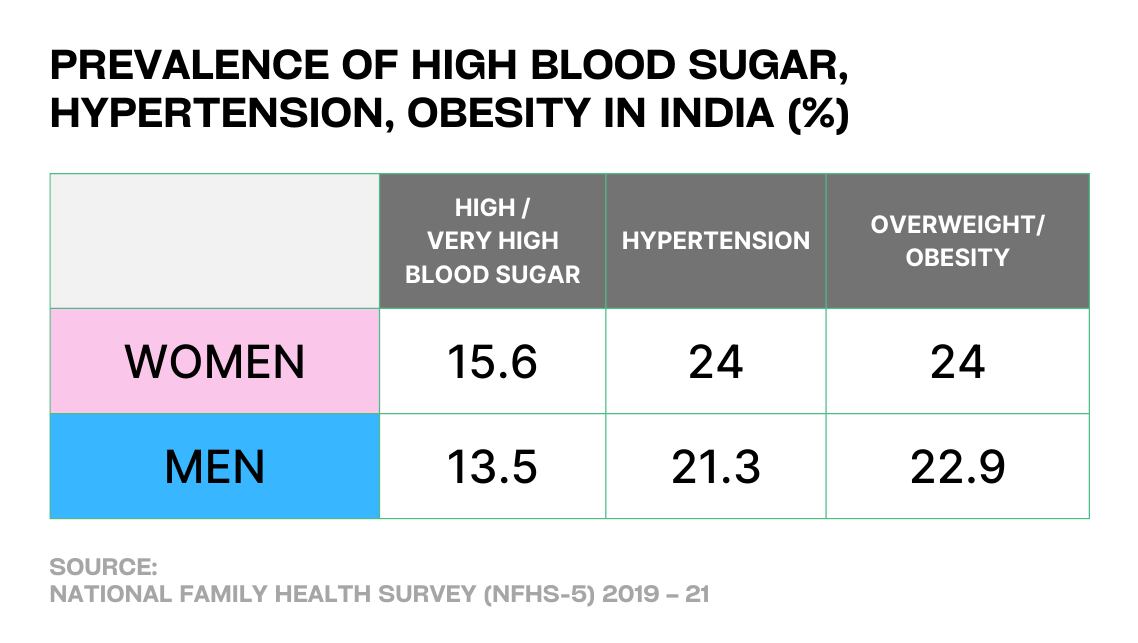
Could high price stand in the way?
Although India is a price-sensitive market, companies could still win consumers with products that come with a higher price tag but provide greater value in terms of quality and the differentiated benefits.
“Our experience has been that price is one of those things in a category like ours, customers almost believed that the prices should be high because that demonstrates a better quality product.
“To give you a sense, our top two selling products have an average order value of about 1800 rupees which is about US$21 for one month supply.
“That's not a very low price [in India], and we see a willingness to pay that price,” said Mariwala.
The two bestsellers, namely Skin Youthful: Marine Collagen and Skin: Renew – Glutathione, comprised about 75 per cent of the firm’s revenue.
“I think the Indian customers are extremely price value conscious. However, if they perceive value in it, they're willing to pay top dollar so to speak for it, so we've not seen price to be a major issue. But I think that if you have an undifferentiated product, then price could potentially be an issue,” he said.
The higher price tag to nutraceuticals is also a reason why certain consumers would prefer overseas to local products, said Chakraborty.
“Some of the Indians consumers are not convinced with the efficacy of the products. Since it is the product efficacy for which consumers are paying a higher price for, they actually depend more on imported health supplements.
“But I think this is a trend everywhere in the world, people tend to trust overseas products more,” he said.
To tackle the cost, he believes that the government could take the initiatives, especially in public hospitals, to sell nutraceuticals at a discounted price.
In the same vein, Sandeep Gupta, chief founder and director of the Expert Nutraceutical Advocacy Council (ENAC) believes that nutraceuticals should be made more affordable.
One way is to reduce the GST of nutraceuticals from the current 18 per cent to five per cent.
He believes that doing so will provide a “strong impact on the pricing strategies of the nutraceuticals, which then can be passed on to the consumers.”
“Nutraceuticals are heavily taxed with a GST of 18 per cent, whereas you see that junk foods, burgers etc is taxed at about 5 per cent GST…This is the irony of the situation,” he said, and he urged the government to look into the issue.
More enforcement on quality needed
One of the ways in which the quality of nutraceuticals could be compromised is usually processes that happened along the supply chain, from raw materials to the manufacturing, said Bhadri.
His company operates testing services for both foods and nutraceutical products that range from pills to functional beverages and foods.
Companies will need to upload the safety test results of their products online every six months which would be accessible to the Food Safety and Standards Authority of India (FSSAI).
As the current system relies on companies to self-comply with the guidelines, he believes that the government should take a more proactive approach in enforcing product quality.
“The number of tests that should be conducted by the government is complaint-based. I think proactive testing is required because if you only wait for a consumer to complain before you go and test something, it's already too late.
“Rather than reactive, moving to a more proactive basis will help,” he said.
Similarly, Mariwala said that a big challenge in the industry was in maintaining product quality and efficacy.
“The biggest challenge, I think, is about building credibility, because some companies have great products, some companies have terrible products. The companies that don't do a good job of delivering a good customer experience would ruin the market for the ones that are doing a good job.
“And so I think the big challenge is maintaining quality and efficacy of the product. And I think that’s both sort of an ethical and regulatory challenge.”


